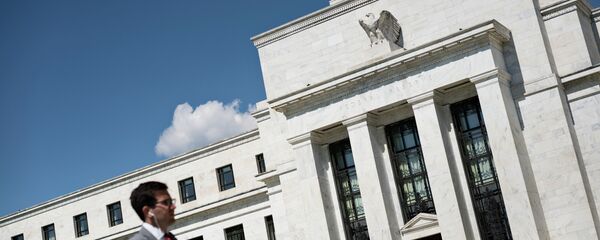Kristian Rouz — Ahead of the US Federal Reserve's policy meeting scheduled for 26-27 April, US macroeconomic data has stirred concerns for its sustainability as two major sectors, consumption and housing sector, both slowed in March. Raising base interest rates now would only exacerbate the situation, as private sector businesses are struggling under the current monetary conditions already, with borrowing costs at 0.25-0.5%. Subsequently, anxiety of the situation in the real economy spread to currency trading, with the dollar sliding against the basket of currencies, whilst Wall Street advanced as corporate earnings season turned up to be less of a disappointment than it was forecast previously.
According to a report by the Department of Commerce, the amount of new building sites slumped a seasonally-adjusted 8.8% month-on-month in March, to 1.09 mln, hitting its lowest since October. Previous anticipations stood at 1.17 mln housing starts.
Issuance of new building permits, laying homebuilding trends in the near-term, dropped 7.7% to 1.086 mln, suggesting the contraction in housing sector is poised to continue slowly.
"That is somewhat more worrisome as the permit demand has lagged starts for the last two months," Joel Naroff of Naroff Economic Advisors, Inc. said. The decline in applications for construction permits "could signal continued softness in the market," he noted.
Nevertheless, the annualized data is still optimistic, with groundbreaking up 14.2% from March last year, and permit issuance up 4.6%. Yet, Q1 2015 was a period of brief contraction in the US economy caused by harsh winter conditions, meaning a significant base effect bias.
Several other business activity reports have shown US inventories, trade, manufacturing, business spending, retail sales and labor market, have all softened in March. Retail dynamics are particularly alarming as consumption is the driving force behind US economy, contributing roughly 70% to the nation's GDP.
"It's not just American consumers stepping back a bit this year, homebuilders also lost steam," Sal Guatieri of Toronto-based BMO Capital Markets said. "This means the two key drivers of the expansion have lost their pep, which explains why the Fed will probably lift rates, at most, a couple of times in 2016."
A hike in interest rate is therefore, next to impossible in April. The Federal Reserve's cautious and data-based approach to policies almost completely rules out a possibility of higher borrowing costs at the point where two major debt-fueled industries have fallen on hard times. According to FedWatch, compiled by CME Group, market participants are not expecting a rate hike until at least Q3.
Amidst lackluster data and Fed sentiment, the US dollar extended losses, rolling back to its June levels, resulting in rising prices for oil and silver and pushing commodity markets up.





